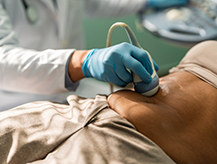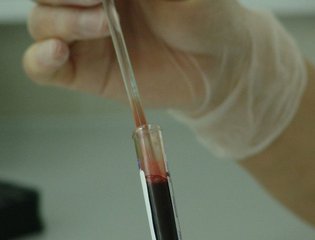Keyhole (laparoscopy) and open surgery (laparotomy)
If you have had a CA125 blood test and ultrasound scans that indicate that further investigation is required, your gynaecological oncologist will arrange for either Keyhole (laparoscopy) or open surgery (laparotomy) to help establish an ovarian cancer diagnosis or to find another cause of your symptoms.
Keyhole surgery (laparoscopy)
Keyhole surgery is a small operation performed by the gynaecologist. Two or three small incisions are made in your tummy (abdomen) to: insert the flexible tube with a light and a camera on the end, put carbon dioxide into your tummy to make it easier for the gynaecologist to see your organs, to insert surgical instruments.
The gynaecologist will check your ovaries and surrounding areas and take tissue samples (biopsies). The tissue samples are sent to a laboratory where a pathologist will examine them for indications of cancer. Once the instruments and tubes are removed, the small incisions are closed using stiches.
The operation takes place whilst you are asleep (under general anaesthetic) and it takes about 30 minutes. You can usually go home the same day as the operation. You may feel some pain and discomfort after the operation however this should not be for more than a few days.
You should receive your results within one to two weeks.
Open surgery (laparotomy)
Open surgery is an operation performed by a surgeon. A large incision is made in the middle of your tummy (abdomen) to examine inside your abdomen and pelvis and take samples (biopsies) of tissues and fluid. The tissue and fluid samples are sent to a laboratory where a pathologist will examine them for indications of cancer.
Sometimes the tissue and fluid samples can be checked during the operation, and with your consent, if they find cancer cells they will remove as much of the cancer as possible (this may involve the removal of the ovary, ovaries, fallopian tubes or other organs situated in the pelvic region). The large incision is closed using stiches and covered with a dressing.
The operation takes place whilst you are asleep (under general anaesthetic) and the length of the operation depends on the amount of tissue removed. You may be in hospital for a couple of days to recover and may have some pain in your tummy (abdomen) for a few days, for which you will be given painkillers. You might also have a tube into your bladder (a catheter) which is removed by a nurse after one or two days.
You should receive your results within one to two weeks.
Reviewed: September 2022
Next review: September 2023


